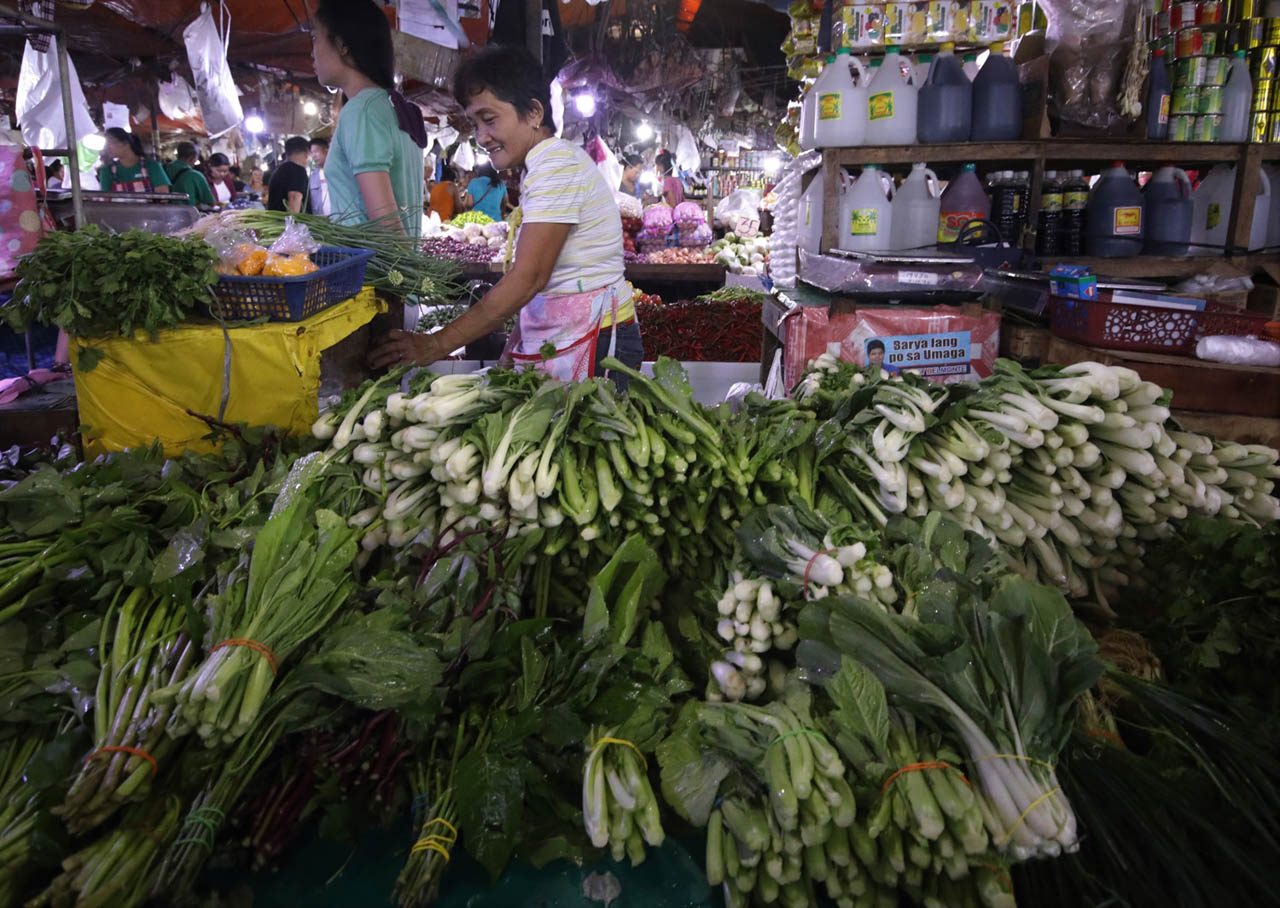SUMMARY
This is AI generated summarization, which may have errors. For context, always refer to the full article.

MANILA, Philippines (4th UPDATE) – Inflation in April slowed down further to 3%, comfortably within target, the Philippine Statistics Authority (PSA) announced on Tuesday, May 7.
The PSA said the downtrend was due to slower increases in food and non-alcoholic beverages at 3%.
Rice prices, for instance, decelerated to 0.02%. Rice is weighted the heaviest among food commodities.
“The continued low inflation of rice can be attributed to the stable rice supply in the country, with more imported rice expected to arrive in the country as the Rice Liberalization Act takes effect,” said Socioeconomic Planning Secretary Ernesto Pernia in a statement on Tuesday.
Annual rates also decelerated for alcoholic beverages and tobacco (9.9%), clothing and footwear (2.4), housing and utilities (3.2%), household maintenance and equipment (3.2%), health (3.7%), and restaurant and miscellaneous services (3.5%).
Inflation in April was the lowest rate since January 2018, or a 16-month low.
“The recent inflation reading validates our efforts towards stabilizing inflation so that the country’s buoyant economic growth, along with key reforms, remains unimpeded,” Pernia said.
But Pernia warned of risks such as El Niño, possible hikes in utility rates, and volatility of oil prices.
“Given unstable global oil prices, the government should prioritize rolling out the second tranche of its social mitigating measures under the [Tax Reform for Acceleration and Inclusion] law, such as the unconditional cash transfer and Pantawid Pasada, especially now that the 2019 national budget has already been signed into law,” he said.
For the National Capital Region (NCR), inflation decelerated to 3.1%. For areas outside NCR, inflation clocked in at 3%.
Rate cut soon?
The April inflation figure is within the projected range of the Bangko Sentral ng Pilipinas (BSP), which is at 2.7% to 3.5%, and in consensus with analysts’ projections.
“However, the continued increase in global crude oil prices and possibility of a prolonged El Niño episode could be a source of upside price pressures over the near term. On the other hand, the weakening global economic environment could present downside risks to inflation,” said BSP Governor Benjamin Diokno in a separate statement on Tuesday.
The BSP earlier said the figure was likely pushed up by higher electricity rates and domestic oil prices.
But the central bank said lower rice prices and the strengthening of the peso offset the uptick.
With inflation easing to the midpoint of the BSP’s 2% to 4% goal for 2019, analysts are looking at whether the central bank will start cutting either the benchmark interest rate or the reserve requirement ratio (RRR) or both.
Out of 12 economists polled by Reuters, 8 predicted that the BSP would deliver a quarter-point reduction in the benchmark interest rate.
Meanwhile, 4 out of the 8 said the rate cut would likely be accompanied by a 100-basis-point reduction in the RRR.
The RRR is the amount of cash banks need to hold as reserves. Easing that amount causes more liquidity in the economy.
Diokno earlier said cuts are “inevitable” as inflation slows down. On Tuesday, he reiterated that the BSP is closely watching price developments in the country.
The central bank’s Monetary Board will convene on Thursday, May 9, to tackle the matter. – Rappler.com
Add a comment
How does this make you feel?
There are no comments yet. Add your comment to start the conversation.